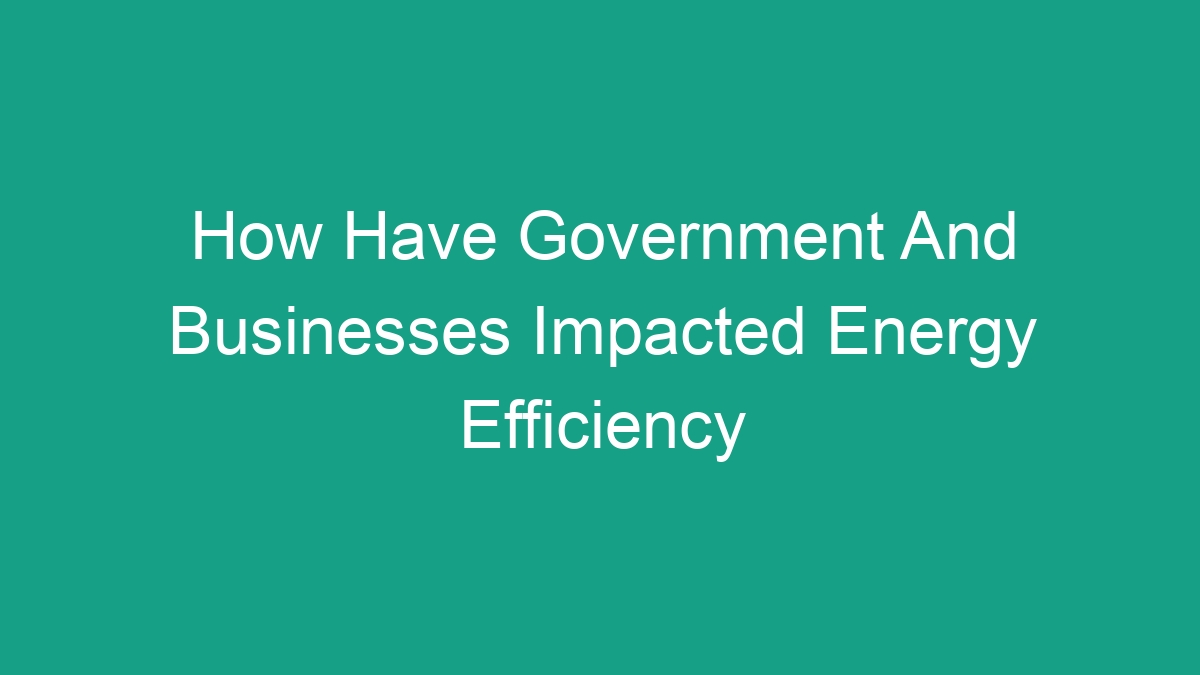
The Role of Government in Energy Efficiency
Government has played a crucial role in shaping energy efficiency policies and regulations. By setting standards for energy consumption and promoting the use of renewable energy sources, governments have had a significant impact on the energy efficiency of businesses and households.
One of the most effective ways in which governments have promoted energy efficiency is through the implementation of energy efficiency standards and regulations. These standards often apply to appliances, vehicles, and building codes, and are intended to reduce energy consumption and greenhouse gas emissions. For example, the US Department of Energy has established minimum energy efficiency standards for a wide range of products, from refrigerators and air conditioners to industrial equipment.
Incentive programs have also been a key tool used by governments to promote energy efficiency. These programs may include financial incentives, tax credits, or rebates for businesses and homeowners who invest in energy-efficient technologies. In addition, some governments have implemented time-of-use pricing policies, which encourage consumers to shift their energy usage to off-peak hours when electricity is cheaper and less carbon-intensive.
Furthermore, public-private partnerships have allowed governments to work with businesses to develop and implement energy efficiency initiatives. By collaborating with businesses, governments can leverage the expertise and resources of the private sector to drive energy efficiency improvements across various industries.
The Impact of Businesses on Energy Efficiency
The role of businesses in energy efficiency cannot be understated. The private sector has made significant contributions to energy efficiency through technological innovation, sustainable practices, and corporate responsibility efforts.
Technological innovation has been a major driving force behind improvements in energy efficiency. Businesses have developed and implemented a wide range of energy-efficient technologies, such as LED lighting, smart heating and cooling systems, and advanced building management systems. These innovations have not only reduced energy consumption but have also resulted in cost savings for businesses.
In addition to technological advancements, sustainable practices have become a top priority for many businesses. Companies are increasingly seeking to reduce their environmental footprint by optimizing their energy usage, reducing waste, and implementing sustainable supply chain practices. This focus on sustainability has led to the adoption of energy-efficient practices and technologies throughout various industries.
Moreover, corporate responsibility has become a key driver of energy efficiency efforts for many businesses. Companies are recognizing the importance of addressing climate change and are committing to reducing their carbon emissions and energy usage. By setting ambitious sustainability goals and investing in energy efficiency initiatives, businesses are not only contributing to a greener future but are also enhancing their corporate image and attracting environmentally conscious consumers.
The Collaboration between Government and Businesses
The collaboration between government and businesses has been essential in advancing energy efficiency efforts. By working together, these two entities have been able to develop and implement impactful energy efficiency initiatives that benefit both the environment and the economy.
One of the most notable examples of this collaboration is the Energy Star program, a joint initiative of the US Environmental Protection Agency and the Department of Energy. Energy Star provides guidelines and certifications for energy-efficient products and buildings, as well as resources for businesses to improve their energy management practices. Through the Energy Star program, businesses are able to showcase their commitment to energy efficiency, while consumers are empowered to make informed purchasing decisions.
Financial incentivesvoluntary agreementsChallenges and Opportunities for the Future
While government and businesses have made substantial progress in improving energy efficiency, there are still challenges that need to be addressed. One of the main challenges is the lack of uniformitycost of implementing energy-efficient technologiestechnological innovationshift towards a low-carbon economy



